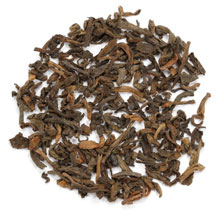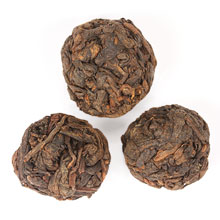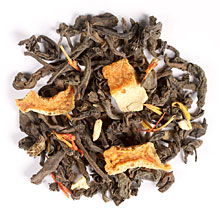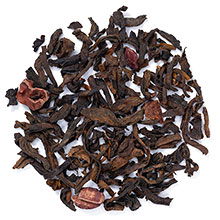Guide to PuErh Tea: Aged, Raw, and Chocolate
by Janelle Wazorick
March 18, 2020

Introduction
Pu-Erh yourself a cup of tea! While green, white, oolong, and black teas dominate the conversation, pu-erh offers a new and exciting experience to longtime tea drinkers and newcomers alike. While a lesser known type of tea, pu-erh truly illustrates the versatility of the tea plant. If you enjoy tea and are looking for something unique to try, savor some pu-erh and embark on a journey unlike anything tea related you've ever experienced.
Pu-Erh (or Pu-ehr) is an aged tea that undergoes microbial fermentation. One of the oldest forms of tea, it is named after the town of pu-erh in the Yunnan province of China and has been produced since the Tang Dynasty (618 - 907 AD). After drying and rolling during tea production, it is aged in the dark for as little as a couple months or for decades before brewing and enjoying.
Historically, it was initially designed to improve with age since it was transported by horse over a long period of time and across great distances. Because of its fermentation process, pu-erh has probiotic qualities not found in other teas, which is beneficial to health and can aid in digestion.

While pu-erh can be bought as loose tea, traditionally it is pressed into cakes that are wrapped in paper, typically with growing and processing information printed on it. The proper amount of tea is broken off with a chisel from the cakes before being wrapped up and stored in the paper it came in. While pu-erh cakes usually come in a disk shape, cakes can also be pressed into other shapes such as square, brick, mushroom, or spherical.
Types of Pu-Erh
There are two main types of pu-erh tea: Sheng (or raw) and Shou (or cooked). Both have different flavors and nuances that will appeal to a variety of taste preferences.Sheng Pu-Erh is the traditional version of pu-erh and the most time consuming to produce. Sheng pu-erhs are aged naturally between ten to fifty years, and because they are largely left undisturbed during the aging process, the tea leaf maintains its greenish color and yields a golden yellow or deep orange brew.
Sheng is known to continue to get better with age: many pu-erh fans will buy younger sheng pu-erhs and store them at home awhile before enjoying, although some will enjoy the tea immediately. The flavor of sheng pu-erh can vary by how old it is with younger sheng pu-erh having an astringent, grassy flavor with fresh, fruity, or floral hints (in some ways, not unlike green tea) and older shengs having a mellower and smoother flavor. Because of the slow fermentation process, older shengs are extremely valuable and can be difficult to come by.

Because of the scarcity of sheng pu-erh, shou pu-erh was created to meet the demand for pu-erh tea at affordable prices. A fairly recent invention, shou pu-erh is aged artificially where the tea leaves are kept in a warm, humid environment to speed up the fermentation process. This allows pu-erh to be produced at a fraction of the time: only 45-60 days. Unlike sheng pu-erh, shou pu-erh is dried to halt the aging process and will not change overtime. Shou Pu-Erhs have a very earthy and mellow flavor. Its woodsy flavor is robust and an excellent choice for anyone who likes bold flavors in their tea.
In addition to the main types of pu-erh, there are flavored varieties, typically made from shou pu-erh. Many of these additional flavors capitalize on shou pu-erh's earthiness and boldness. Many of these shou pu-erh blends feature chocolate, fruity, and even spices.
How to Brew Pu-Erh
Pu-Erh can be brewed like a typical tea in a tea pot or tea cup as well in a gaiwan or traditional Chinese lidded bowl. Prior to brewing, it is recommended to rinse the tea leaves for two reasons: one, to wash away any dust that accumulated on the tea leaves during the aging process, and two, to wake up the tea leaves to release its full flavor.
Because it shares some qualities with green tea, Sheng Pu-Erh should be brewed at a lower temperature to avoid damaging the tea leaves. Heat water to around 190 degrees Fahrenheit and brew the sheng pu-erh for around three minutes. Shou Pu-Erh, because it is a hardy tea like black tea, can handle higher temperatures. Brew shou pu-erh in 200-212 degrees Fahrenheit water for around five minutes. Both sheng and shou pu-erh can be brewed multiple times and, unlike many teas, is very forgiving with brewing times: experiment with various brewing times to create a cup with the right amount of flavor for you!